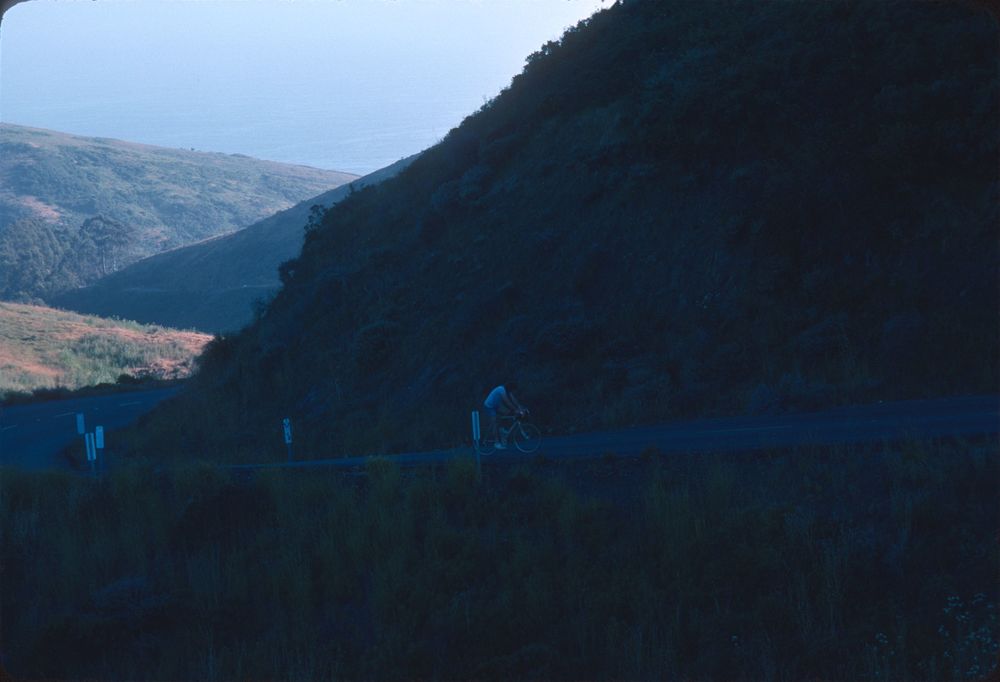
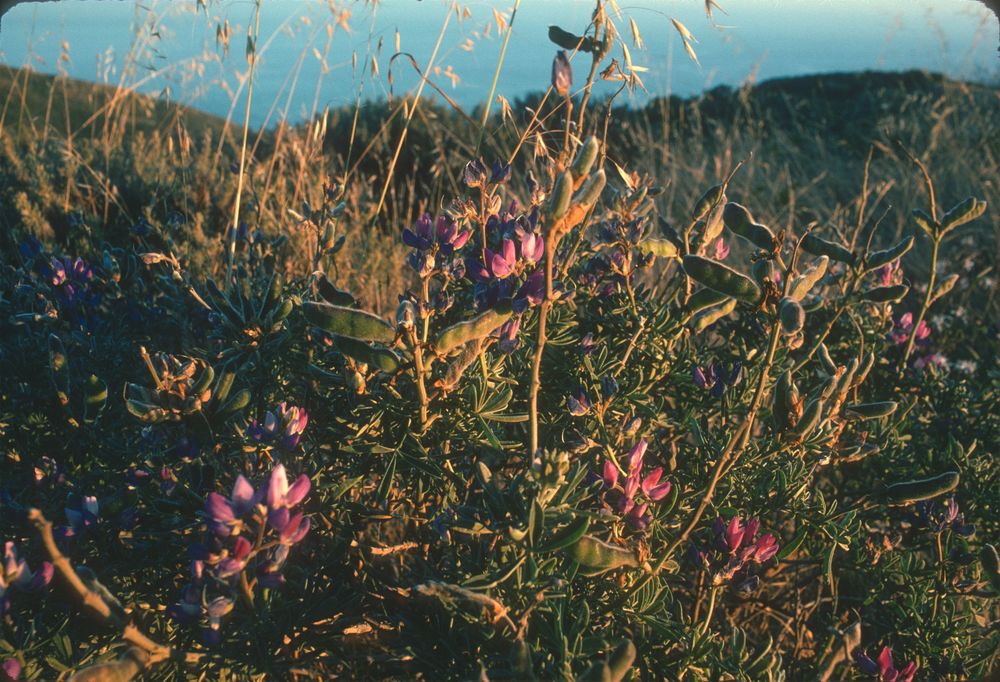
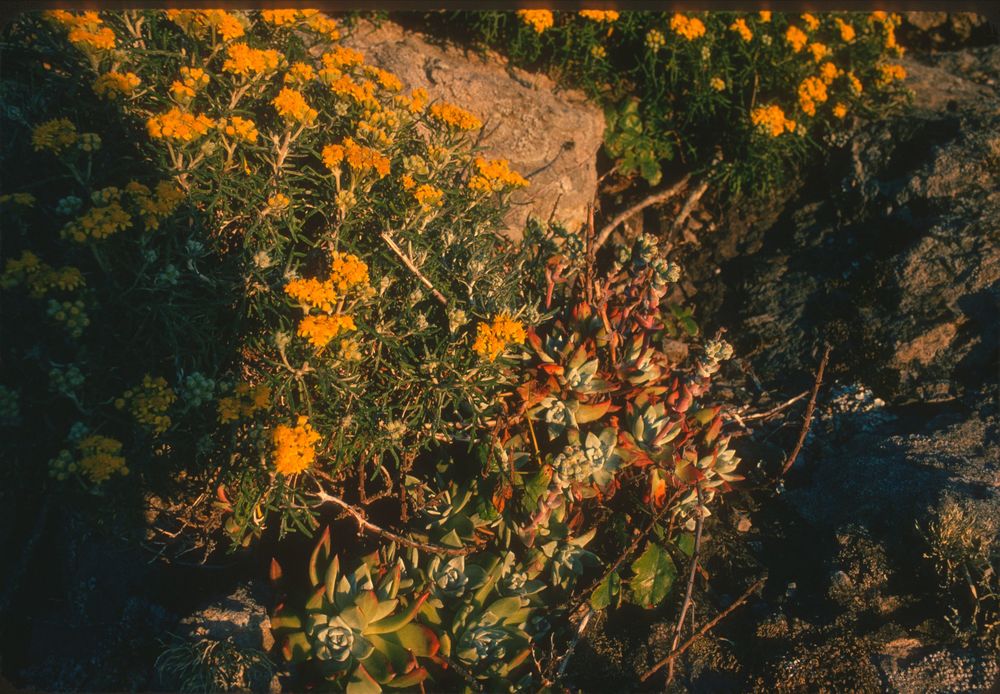
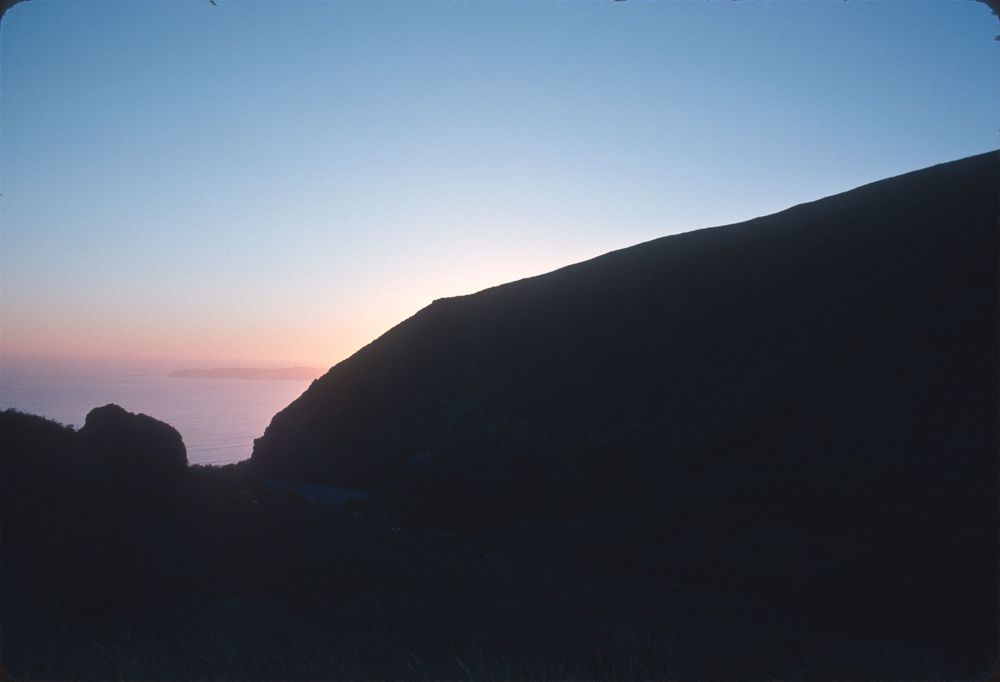
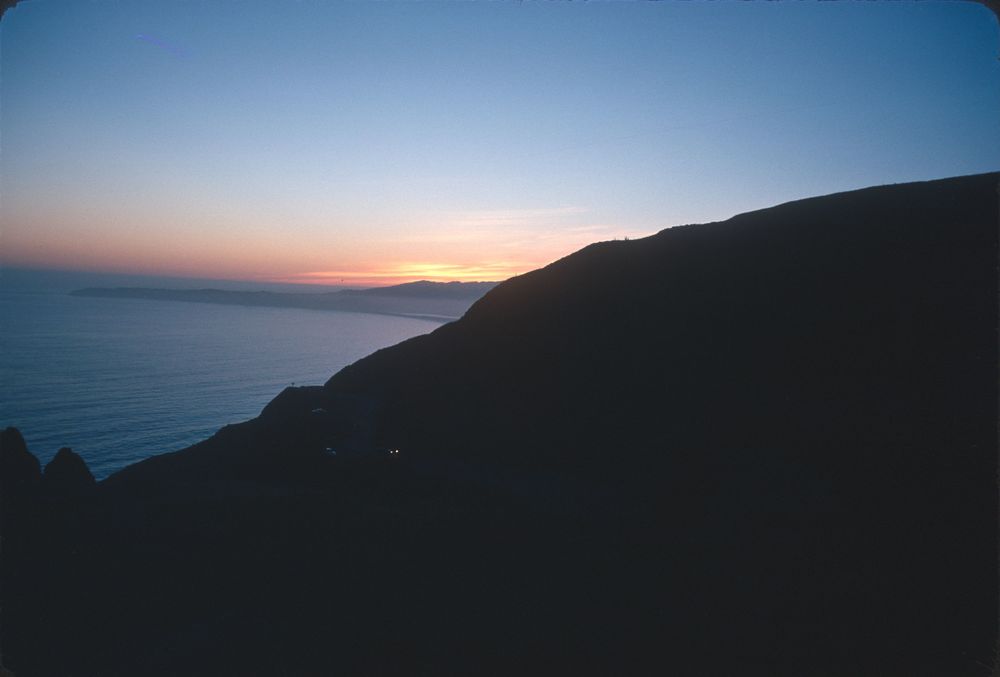
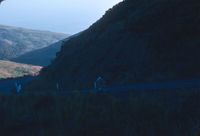
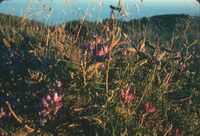
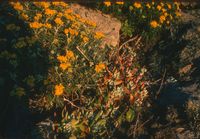
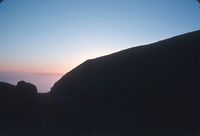
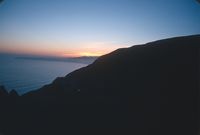
Return to index page
Return to home page
Written 2024 May 5, last updated 2024 May 5.
Things changed so radically north of the Golden Gate Bridge that these photos belong on a separate page. Northern California, as far as near coast people density goes, ends just north of the bridge and things quickly turn into hilly terrain not suitable for development. I spent the next several days thinking to myself "At least this is good practice for the Rockies."
It turned out that 100+ miles uphill stretch in the North Cascades has a lot less climbing than this rolling mountain terrain does.
This is a good place to describe challenges in scanning the 35 mm Kodachrome slides. Originally I bought what turned out to be a very good scanner in 2007, the Nikon Coolscan V. My intent was to scan the slides while between jobs, but I wound up back at work sooner than I expected. Also, Nikon's software was annoying to use and seemed to enhance the film's grain. Later, in 2013, I came across Hamrik's VueScan software that runs on Linux. I bought that and tried it out. I don't remember much about those experiments, but hang on a bit. In 2024 and getting uncomfortably close the the 50th anniversary, I decided I better pay for the professionals to scan things. I sent the first 140 slides and some old family and college photos to EverPresent, one of the few companies that touts quality over this week's sale price.
I'm going to digress a bit to explain Kodachrome 64 film. I've made some Cibachrome prints from the trip's slides and other subjects. Kodachrome is pretty contrasty film. Nearly all my photos were done with a polarizing filter. In dry weather it can greatly darken blue sky, especially when the sky, camera, and sun make a right angle. Cibachrome paper is also pretty contrasty, it pretty much has to be so to keep black things black and white things white. In general, copying and scanning Kodachrome slides is a challenge.
The results from Everpresent did great with dark areas of the slides, but the highlights were overexposed. For many photos the highlights are more important than the shadows. Somewhat disappointing, but not surprising. What was a surprise was that the slides, in paperboard mounts, had faithfully preserved a lot of dust that was on the slides. I believe they tried blowing dust off the slides, but it didn't work well, especially on low contrast surfaces like sky.
I still had my old scanner and decide to see how it does. It still ran. The VueScan software from 2013 still ran on my newer but obsolete Linux system. The current version doesn't run (library issue) so I used the Windows 10 version on my laptop. It works quite well and after a scan it tames the grain the scanner saw and from a fourth channel for infrared light, it can see dust and removes it from the image very well. The scanner provides images that are too dark, not a problem for the highlights, but the shadow detail is simply not there for VueScan to work with. Ultimately I wound up scanning all 200 or so slides. I redid the first 80 after deciding I needed to tell VueScan brighten things beyond what it did on its own. I also used an old, expired Staticmaster brush to give Vuescan less to fix. I did very well.
Pretty much all the photos on this page are still too dark. I may replace them or add EverPresent's scan. I'll also look into seeing if I can do a longer exposure or brighten the light source on the Nikon scanner.
At any rate, expect to see some too dark images throughout these pages. On the "bright" side, highlights like clouds and pastel flowers stand out very well. Had I not written this section, you might not even notice!










Return to index page
Return to home page
Written 2024 May 5, last updated 2024 May 5.